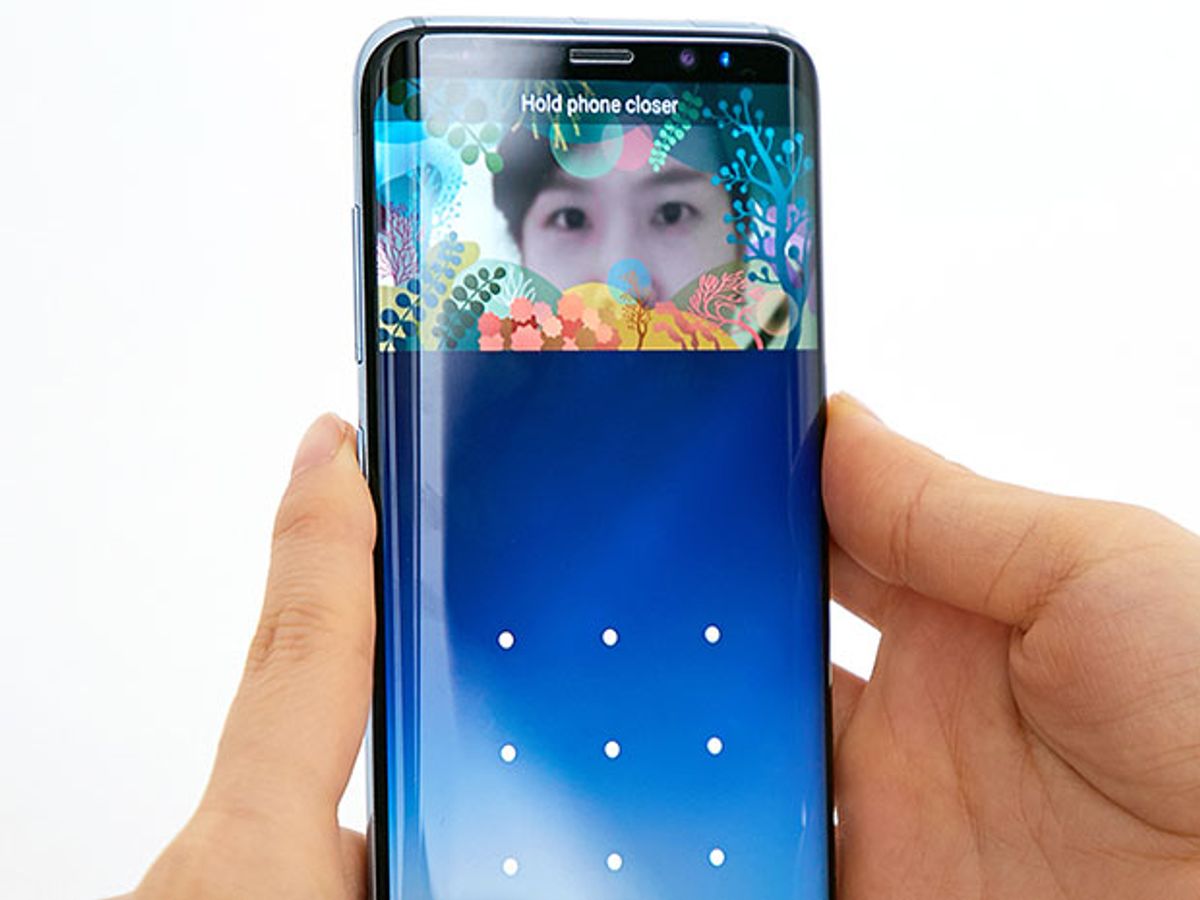Today Samsung revealed its new Galaxy S8 and S8 Plus smartphones, which users can unlock through iris scanning and facial recognition technology. To do so, users simply hold their phone in front of their eyes or their entire face, as if they were snapping a selfie.
Biometric technology is now being integrated into more consumer devices and is increasingly seen as a critical next step to improve security. Indeed, Justin Denison, Samsung’s senior vice president for product strategy and marketing, referred to the S8’s iris-scanning abilities as the “most secure form of biometric security we’ve ever created.”
A facial recognition feature called “Face Unlock” was available on previous Samsung devices including the Galaxy S4, the Galaxy Nexus, and the Galaxy Note2. In those devices, it came with a warning that facial recognition is less secure than a passcode, and can be fooled by people who look like a user (or perhaps even by a photograph of the user). The company’s troubled Galaxy Note7 from 2016 also offered iris scanning, which is considered more secure than facial recognition.
In the S8 and S8 Plus, these biometric security features can be activated in addition to, or in place of, a PIN code. As is the case with most iris scanners, people who wear glasses may have to remove them in order for the technology to work. The familiar fingerprint scanner from previous generations has been relocated to the upper half of the S8’s back panel, in a spot where it’s more likely to scan an index finger than a thumb.
The new devices will go on sale in the U.S. on 21 April, though Samsung has not yet said how much they will cost. After its recall of the Note7, Samsung is counting on these phones to win back customers. In addition to biometric security, the S8 and S8 Plus also offer a new voice recognition service named Bixby and an edgeless curved display.
Both of the new phones feature an Infinity Display (a term the company trademarked just last month), which is a high-definition Super Active-Matrix Organic Light-Emitting Diode (AMOLED) screen with curved edges that cascade over the phone’s sides. Denison said this design gives the S8 and S8 Plus a higher screen-to-phone ratio than any of Samsung’s previous models. Their screens measure 5.8 inches and 6.2 inches for the S8 and S8 Plus, respectively (and that’s measured diagonally, not vertically).
With the Infinity Display, Samsung has aimed to have the slimmest possible bezels on the S8 and S8 Plus. The bezel is the plastic rim that typically runs around all four edges of a screen. “You can barely tell where the screen ends and the phone begins,” said Denison. “Where there used to be bezels, now there’s only screen."
The company is now calling its Infinity Displays “bezel-less,” which is still one step away from a totally “bezel-free” smartphone, in which the bezels above and below the screen would also be removed. Promoting ever-slimmer bezels is something of a trend among smartphone makers, as Chinese manufacturer Xiaomi has also shown this year in their new Mi Mix phone.
One way Samsung managed to reduce the size of its bezels was to eliminate the traditional home button and stretch the S8’s screen nearly to the phone’s bottom edge. The home button is no longer visible. Through “a combination of hardware and software,” Denison said the company was able to hide it beneath the display, where it can supposedly sense the pressure of a finger just as well as any home button that has come before it. In a quick review of the S8 following the press event, the invisible home button was just as easy to use as its more conspicuous predecessors.
On the services side, Samsung says its new voice recognition service on the S8 called Bixby offers greater contextual awareness than its competitors (ahem, Siri). For example, Bixby is integrated into the phone’s camera and can be instructed to search for a restaurant or shop for an item, that is within the camera’s field of view. By pressing a special button on the side of the phone, users can summon Bixby and speak to it in one of four languages: English, Spanish, Korean, or Chinese.



